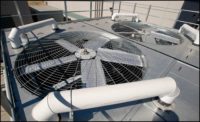Many consulting engineers will tell you that time invested in the construction phase is beyond their scope of work and, of course, the fee has been all used up and “we can’t afford to waste our time” with equipment and associated system startup. Some might also say that this equipment startup is the contractor’s responsibility. These comments are pretty common, and I’ve responded to these issues in the past in this column (e.g., January 2007 and August 2008).
While the above excuses apply mostly to plan-bid-build and construction management project delivery methods, those arguments don’t apply for integrated project delivery (IPD) and design-build (D-B) project delivery methods. With these two latter methods, the design engineer is an active team member of the IPD and D-B teams, and the consulting fee should reflect this startup assistance requirement.
So putting aside those who don’t want to participate and aren’t creative enough to cost-effectively put aside some of the consulting fee, the design engineer must prepare himself if he is to be a proactive partner in getting the equipment set up and running per the design intent. Just like preparing for a construction site meeting and field visit report, the designer must load up his portable computer with the following electronic documents, using a central air system as our example:
- Approved shop drawings for the AHU and the sheet metal fabrication drawing
- Standard details from the contract drawings showing coil piping installation
- Contract drawings showing the sheet metal and piping drawings associated with this equipment room, along with the associated drawing part plan(s) and sections through the AHU equipment room showing maintenance access and filter and coil removal compliance
- Standardized equipment and system startup sheets in sync with the HVAC subcontractor and TAB subcontractor’s own startup sheets
- Digital camera to photograph the installation for inclusion with the field report that the designer shall issue from this startup process
- Other tools and personal protection equipment noted in last month’s column
Prior to the equipment startup the design engineer, in sync with the contractor’s mechanical-electrical coordinator, will make sure the trade subcontractors will be well versed on each of the trade requirements (e.g., Division 1, etc.) found in the contract specifications. It is important to note that equipment startups should be scheduled for the beginning of the work week and not on a Friday, for those who haven’t given this little detail any thought.
Prior to the equipment startup, ideally it would be good to have the automatic controls in place so that equipment trending could begin as soon as possible after the startup. This allows for any fine-tuning once the designer has reviewed the trends. All this documentation will be useful, if not already required by the commissioning engineer. In addition, this documentation can be linked to the owner’s computerized maintenance management software program’s asset database. A side benefit of designer participation in startup is that the process takes the engineer from theory to reality, often a significant missing piece in the designer’s technical education (see this column, March 2005).
Referring to my 24-hr “meeting minutes and field visit report” rules, it is imperative that the designer engineer not return to the office until he has completed documents uploaded in his portable computer.
Once back in the office, the designer should immediately download all the electronic documentation to the job folder on the company’s internal network and to email out the information to all parties needing this information.








